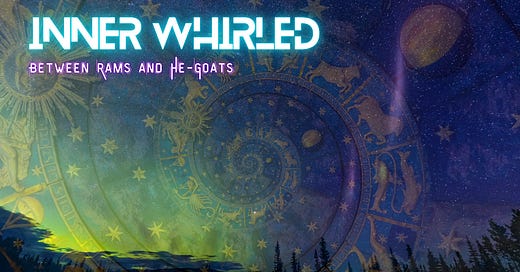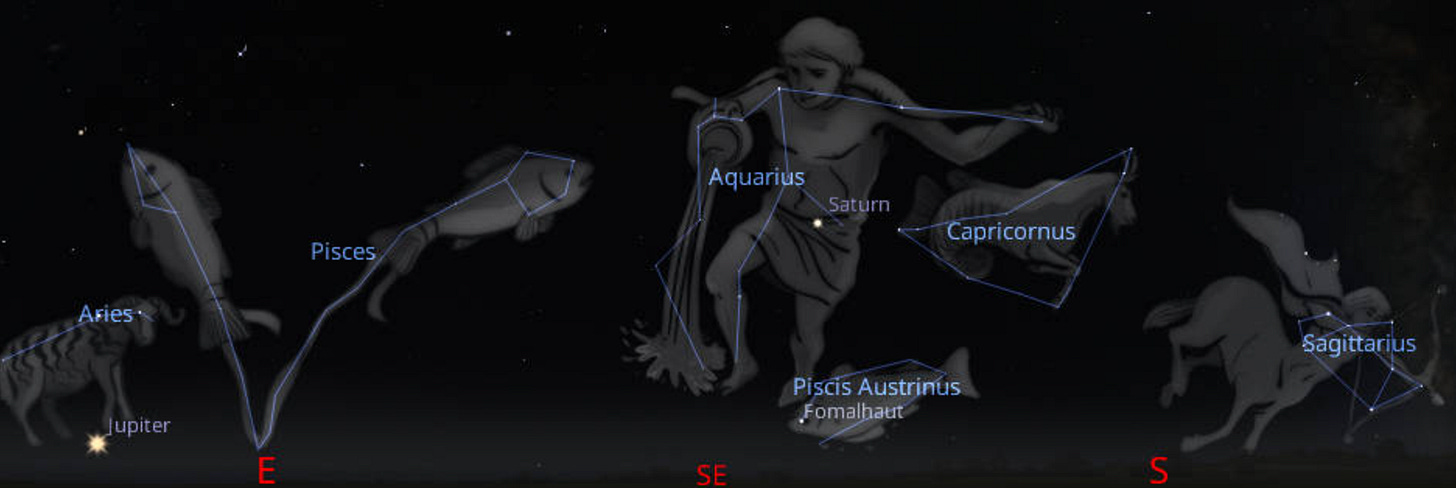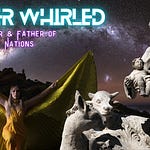There are two more episode show-notes already in the can, just waiting to be recorded, but this might be the last Inner Whirled podcast we do before Chance becomes a father. We will get to those episodes eventually, but in the event that his free time is drastically cut, we’re giving you this almost 4-hour episode to make sure you won’t go hungry in the meantime.
Until the freedom of the press and learned men abandoned fabulous history, it was believed characters like Bacchus, Silenus, Hercules, Saturn, and the like, were names of Noah.
If there were any doubt about the other archetypes, would you at least concede Hercules is the sun? Most people would, and the status quo thought Hercules was Noah. What does that make Noah?
For those who want to dive deeper into that subject, revisit the following:
Fresh Batch #117: Are the Etruscans Older Than the Phoenicians?
The following is my continued commentary on Nelme’s publication The Origins and Elements of Language from the 18th century.
The Latin Silvanus, who Britain’s foremost scholars believed was also Noah, was an archetype that not only become Pan, but was borrowed or inherited from the Etruscan Selvans.
The following are Etruscans bronzes of Selvans and Culsans (Janus). Notice the animal skin on his head, which some claim is a bear, but it could be a lion.
Given that the caduceus is a symbol or tool of the savior archetype, and the Etruscans used it for Selvans, the Savior, we have a bona fide possibility that the missing link for Baalbek is the Etruscan connection, since the only remaining element of it in the historical record is Roman. The city of the sun, or lord, the Heliopolitan Jove, is the city of the Savior, which would also be Noah.
“Upon the reverse of another medal of the same Philip we find a fourth temple, which seems to belong to Heliopolis by the legend COL. IVL. AVG. FEL. HEL. Colonia Julia Augusta Fœlix Hieliopolitana. A stair of many steps leads to an area, in which is a temple of the form of the great temple of Balbec : This is, in all probability, an awkward representation of that great temple, with the courts, portico, and great stairs leading to it.”
In Cornish, a language that is directly descended from the ancient Etrusco-Phoenician system, Sylvans means salvation, while Sylvias means a Savior, a Redeemer, or Deliverer.
To dive deeper into Selvans, see the paid member portion of the following:
Fresh Batch #78: Selva di Malano, Mislabeled by Archaeological Grifters
One of the major problems with research these days is that people can make more money based on ratings/viewership, so the more eyes they get on their content, the more income they’ll earn through advertising. The Truth is seldom sensational enough to garnish viewership, so most channels are focused on evoking emotional responses rather than being realistic. Once such piece of clickbait is the idea of “Etruscan pyramids.” As you can see, there is no such thing at these locations. But it doesn’t make them any less interesting.
Rev. Taylor wrote (Astr. Lect. p. 153.), “The whole story of Genesis is so egregiously and manifestly a fable, that they have, in all ages, been considered as enemies both of the Christian and the Jewish faith, who have ever pretended to consider it as a fact.
“Origen, in his celebrated answer to Celsus, upbraids that sarcastic infidel with his total want of candor, in treating this story as if it had been delivered as history; and hiding what he ought to have known—i.e., that all this was to be understood in a figurative sense. Celsus, not giving his readers the words which would have convinced them that they were spoken allegorically (Contra. Cels. lib. 4); and ‘It is not reasonable,’ he says, ‘to deny to Moses the possession of truth, under the veil of allegory, which was then the practice of all eastern nations’.
“It is admitted, then, that this is no true account of the origin of the human race. It is not true,—it is not pretended to be so. It is not the doctrine of Scripture (an’ ascribe to Scripture whatever authority you please) that Adam and Eve were the first of the human species, or that the human species had any such origination as has been pretended. And Cain, therefore their first-born son, might have gone and married a wife in the land of Nod, without any inconsistency to the general scope of the allegory.
“But the inconsistency is that the doctrine represented to be true, should be founded on a basis admitted to be false; and that the whole scheme of salvation should be thought to be not an allegory; just, ye see, for no other reason than because of its being founded on the most egregious and manifest allegory that ever was in the world.”
This is significant because in The Holy Sailors and Terminalia, I put forth the evidence to support cultural diffusion between the Americas and Europe long before the establishing of the Common Era. The priesthood in Scotland attempted to use the evidence to demonstrate that the signs of cultural diffusion were not, in fact, a result of ancient cultures interacting with each other, but the result of all races being descended from Adam and Eve. But if Taylor be correct, the story of Adam and Eve is no true account of the origin of the human race.
The year was reckoned at four different times by four significant cultures. The Egyptians reckoned it at the summer solstice while the Irish reckoned the New Year on November 1st after Samhaim. The bridge between the cultures is the Italian reckoning of the year, which seems to have been at the winter solstice during the times of Janus, then at the vernal equinox during the calendar of Romulus, and subsequently back to the winter solstice during the Christian era.
Of the cultures that share flood symbolism, the details that come to mind tend to be a rainy or flood season, or the melting of snowcaps, which causes rivers to overflow, a characteristic that is typically found near the Nile, Euphrates, and Ganges, as well as at the Isthmus of America. These stories bear uncanny similarity to a degree where one has to imagine they are forgery, coincidence, examples of a culturally diffused system of priestcraft, or, are all retelling their account of the same historical event. No flood mythos is more prominent than that of Noah, who even the Welsh have their version of: Dylan, son of the sea.
Dylan's Baptism
According to Wiki, “One of the sons, Lleu Llaw Gyffes, is borne away by Gwydion as a lump of flesh and concealed in a chest until maturity, but the other, a sturdy blonde boy, was immediately forsaken by his mother yet was acknowledged by his great uncle Math and given the name Dylan. As soon as Dylan comes in contact with his baptismal waters, he plunges into the sea and takes on characteristics of a sea creature, moving through the seawater as perfectly as any fish (this is Oannes symbolism from the Babylonian system, which in all likely hood is merely the Romish system):
“So they had the boy baptized, and as they baptized him he plunged into the sea. And immediately when he was in the sea, he took its nature, and swam as well as the best fish that was therein. And for that reason was he called Dylan, the son of the Wave.”
Chest is another signification of ark. Not only is the above reiniscent of Noah, it is also reminiscent of Moses. Keep in mind that when we are dealing with St. Matthew, the Evangelist, it is the Royal Star Fomalhaut, the fish’s mouth that Aquarius pours his urn into. Matthew, the sun, or one of the saints, in the winter portion of the Zodiac, is depicted with an angel, who represents Aquarius, the only sign of the Zodiac that corresponds to a man.
For reference, Fomalhaut is the mouth of the Southern Fish constellation. It is a bright white star that heralds winter. What sign follows Aquarius? The Fish. The sun, moving through them, goes from taking on the characteristic of a man to the characteristic of a fish, after which he will become the Lamb of God, Aries, taking away the sins of the world (the months of suffering in the cosmos), and usher in the paradise of the warm portion of the Zodiac.
According to Wiki, “In Math fab Mathonwy it is told that Dylan's great uncle Math would die if he did not keep his feet in the lap of a virgin when not at war. Math’s original foot-holder, Goewin, is raped by Gilfaethwy who is punished severely when Math returns, turning Gilfaethwy and Gwydion into a series of mated pairs of animals. Math then marries Goewin to alleviate her shame, but must find a new virgin to hold his feet. Gwydion suggests his sister, Arianrhod. Math magically tests Arianrhod to confirm that she is a virgin, at which point she gives birth to twin sons.”
Virgo is almost across from Aquarius, so when the sun is not in either portions of the year, you will see them opposite each other in the night sky, or Math, when not at war, that is, when the God of War, the sun, is not blotting them out, has his feet are in the lap of a virgin. The twin sons birthed by the subsequent virgin, are likely Gemini. Now, I don’t make these claims. I merely suggest that these fables, which are ridiculous in the context of realism or history, become excellent resources when looked at from the perspective of encoding astronomy. Goewin, being raped, is similar to the rape of Persephone or the stealing of Helen, when the constellation Virgo becomes the Lord of the Ascendant and rules the night skies of winter. Dylan being the son of the Wave, which is the sea, or mare, is the same as Jesus being the son of the Sea (Mary; Mare). Recall that the term rape, in the context of the story, is from raptus, the context of which means carried away, seized, or kidnapped, so it doesn’t mean what that word signifies in the term’s modern usage.
From Wiki: Squire (2000:158) prefers to see in Dylan the remnants of a god of darkness:
“[T]wo sons were born at one birth – Dylan and Lleu, who are considered as representing the twin powers of darkness and light. The clamour of the waves dashing upon the beach is the expression of their longing to avenge their son.”
Gods of Darkness represent the sun in winter, the months of Hell. All of these stories have astrotheological elements, which get lost in the retelling or rewriting of them by people who weren’t aware of their initial significance. This leads us to our next subject, which will be Noah.
For those interested in these subjects and their relevance to uncovering history, invest in yourself and make your way through the Spirit Whirled series and The Real Universal Empire.







Become a member to access the full podcast and the rest of the show notes.
Listen to this episode with a 7-day free trial
Subscribe to Ancient History, Mythology, & Epic Fantasy to listen to this post and get 7 days of free access to the full post archives.

























